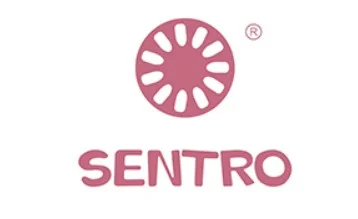Unraveling the Future: Exploring the Potential of Knitting Machines
Aug 15, 2023
The world of knitting has undergone a remarkable transformation with the advent of technology. Knitting machines, once confined to industrial settings, have found their way into the hands of crafters and artisans, revolutionizing the art of creating textiles. In this article, we embark on a journey to unravel the potential of knitting machines, exploring their mechanics, applications, and the impact they've had on the realm of crafting.
The Mechanics of Knitting Machines
At the core of every knitting machine lies a symphony of gears, needles, and yarn, orchestrated by advanced automation technology. These machines are designed to replicate the intricate hand movements of a skilled knitter, seamlessly weaving yarn into fabric with remarkable speed and precision. The operation of knitting machines involves selecting the stitch pattern, adjusting tension settings, and initiating the automated process.
Knitting machines come in a variety of types, catering to different projects and skill levels. From circular machines perfect for creating seamless garments to flatbed machines suitable for intricate patterns, these devices offer an array of possibilities for crafters and textile enthusiasts. As the machine springs to life, the rhythmic dance of needles and yarn creates a fabric that mirrors the artistry of hand-knitted pieces.
Applications in Fashion and Beyond
The influence of knitting machines extends far beyond the realm of traditional crafting. In the fashion industry, these machines have transformed the way garments are produced and designed. Designers now have the ability to create complex patterns, textures, and even three-dimensional structures with unparalleled precision. From cozy sweaters adorned with intricate cables to avant-garde knitwear that challenges conventional design norms, knitting machines have opened new avenues for creative expression.
One notable application is in the realm of sustainable fashion. Knitting machines allow designers to produce garments with minimal waste by creating textiles to exact measurements, reducing the need for cutting and sewing. This approach aligns with the growing demand for eco-friendly and ethical fashion choices, demonstrating the potential of technology to drive positive change in the industry.
The Fusion of Tradition and Innovation
Knitting machines offer a unique fusion of tradition and innovation, catering to both seasoned knitters and those new to the craft. For experienced knitters, these machines provide a platform to explore intricate stitch patterns, experiment with different yarn types, and create larger projects more efficiently. The automation aspect enhances productivity without compromising the creative process, allowing artisans to focus on design and customization.
At the same time, knitting machines serve as a welcoming entry point for beginners. The machines' automation simplifies the knitting process, making it accessible to individuals who may not have the time or experience to master traditional hand knitting techniques. With user-friendly interfaces and guided instructions, newcomers can quickly embark on their knitting journey and create impressive projects.
Challenges and Future Innovations
While knitting machines offer a plethora of advantages, they are not devoid of challenges. The initial investment cost and the learning curve associated with operating these machines may deter some individuals from embracing this technology. Moreover, the intricate mechanics of knitting machines require regular maintenance and troubleshooting, which can pose challenges for users without a technical background.
Looking ahead, the future of knitting machines holds exciting prospects. As technology continues to evolve, we can anticipate even more user-friendly interfaces, enhanced connectivity features, and increased versatility in terms of stitch patterns and techniques. The knitting community is likely to see the emergence of online platforms, tutorials, and communities dedicated to knitting machine enthusiasts, fostering a collaborative environment for learning and sharing.
Conclusion
The marriage of knitting and technology has birthed a new era of creative possibilities. Knitting machines, with their intricate mechanisms and fusion of tradition and innovation, have redefined the art of crafting textiles. From the world of high fashion to the cozy corners of homes, these machines have woven their way into the fabric of our lives, leaving an indelible mark on the art of knitting. As we stand on the threshold of this exciting evolution, we are reminded that the future of knitting is not only in our hands but also in the intricate dance of needles and yarn guided by the marvels of technology.
